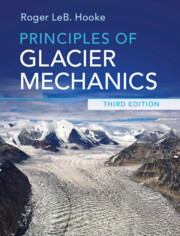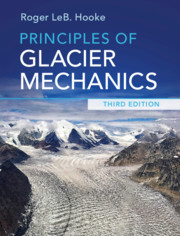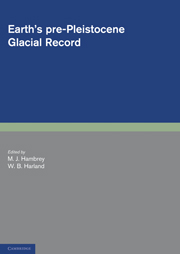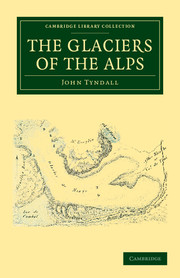Principles of Glacier Mechanics
This book, first published in 2005, provides students and practising glaciologists with the tools they need to understand modern glaciology. Relatively simple concepts are introduced first, followed by mathematically more sophisticated chapters. A knowledge of basic calculus is assumed, but important concepts of physical processes are developed from elementary principles. Emphasis is placed on connections between modern research in glaciology and the origin of features of glacial landscapes. Student exercises are included. This new edition builds on the successful first edition: it has been completely updated, and important new sections and whole chapters have been added. Principles of Glacier Mechanics is designed to be used as a primary textbook in upper division and graduate courses in glaciology, and can be used as either a primary or supplementary text in courses in glacial geology. Practising glacial geologists and glaciologists will also find it useful as a reference book.
- Develops concepts from the bottom up: a working knowledge of calculus is assumed, but beyond that, the important physical processes are developed from elementary principles
- Ideal as a text book for upper division and graduate students
- Draws many connections between recent glaciological research and topics of concern to glacial geologists including the origin of ice-age landforms and modeling of vanished ice sheets
Reviews & endorsements
From reviews of the first edition: '… a stimulating and educative text.' Journal of Glaciology
' … a tour de force of the state of modern glaciology … ' Global and Planetary Change
Product details
July 2005Adobe eBook Reader
9780511081293
0 pages
0kg
217 b/w illus.
This ISBN is for an eBook version which is distributed on our behalf by a third party.
Table of Contents
- Preface
- Acknowledgements
- 1. Why study glaciers?
- 2. Some basic concepts
- 3. Mass balance
- 4. Flow and fracture of a crystalline material
- 5. The velocity field in a glacier
- 6. Temperature distribution in polar ice sheets
- 7. The coupling between a glacier and its bed
- 8. Water flow in and under glaciers: geomorphic implications
- 9. Stress and deformation
- 10. Stress and velocity distribution in an idealized glacier
- 11. Numerical modeling
- 12. Applications of stress and deformation principles to classical problems
- 13. Finite strain and the origin of foliation
- 14. Response of glaciers to changes in mass balance
- References
- Index.








